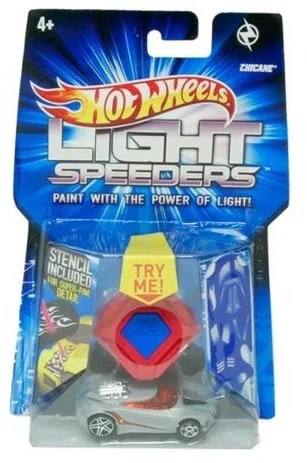With the current virus situation, it seems odd to write a blog post about nerdy patent prosecution issues. But at the same time, sometimes we need a distraction and patent prosecution issues are usually good for that.
One of the things that is hard about patent prosecution, especially in front of the PTAB, is that the applicant is always required to be consistent whereas the PTO is not. For example, just try arguing that something is non-obvious because the examiner restricted that exact something in a restriction – the examiner and PTAB generally ignore such arguments.
Turning to the applicant, a recent decision illustrates just how important it is for the applicant to maintain consistency in their arguments and prosecution strategy. US 13/682,215 to Mattel relates to a blister pack for a toy, such as a Hot Wheels vehicle. The packaging enables a user to try out the “paint with light” feature in the store. If you have ever seen the actual product, it is pretty cool.

The application had a bit of a tortuous path through the office and ended up on appeal at the PTAB. Claim 1 on appeal is listed below:
1. A packaging assembly for a toy, comprising:
a backing sheet; and
a blister pack attached to the backing sheet, the blister pack comprising:
a body portion,
an insert positioned within the body portion, the insert comprising a first and second cavity,
a light source positioned within the first cavity of the insert, and
a product positioned within the second cavity of the insert so the light source illuminates the product when actuated, wherein the product contains a photochromatic portion that is responsive to the light produced from the light source.
One of the dispositive issues on appeal turned out to have nothing to do with the cool light-activated paint, but rather the boring concept of cavities in the blister pack for the toy and the light source. The examiner cited a primary reference that was missing the packaging and the examiner asserted that it would have been obvious to have packaged the product and the light source of the primary reference in the packaging assembly of a secondary reference (Yu) allow the product to be tried prior to purchasing to educate a potential purchaser about the product. Yu showed a flashlight and a reflector in a package.
Mattel appealed, arguing that even if this was correct, the rejection was faulty because the combination fails to teach, suggest, or disclose the feature of ‘an insert positioned within the body portion, the insert comprising a first and second cavity’ where ‘a product is positioned
within the second cavity.’ Specifically, Mattel was arguing that Yu’s receiving contour 54 is L-shaped and that because the legs of the L-shaped contour are not separated from one another, they cannot be considered separate cavities (i.e., the “first and second cavity” recited in the claims).
There were several problems for Mattel pointed out by the PTAB. First the PTAB noted that Mattel did not point to anything in the claim or the specification requiring such a limited reading of terms. And an even bigger problem was that Mattel’s own embodiment in the specification and figure showed that the example cavities in the figures and specification were connected and were not “separate.” As such, it would be improper to require a narrowed interpretation that excluded the disclosed embodiment.
It is important during prosecution to be consistent and logical in arguments especially relating to proper interpretations of claim elements. Even if inconsistent arguments might be successful in front of an examiner that is not paying close attention, or might go unnoticed by the examiner, the PTAB is usually on top of these issues, and any later enforcement actions will surely lead opposing counsel to them.

Leave a comment